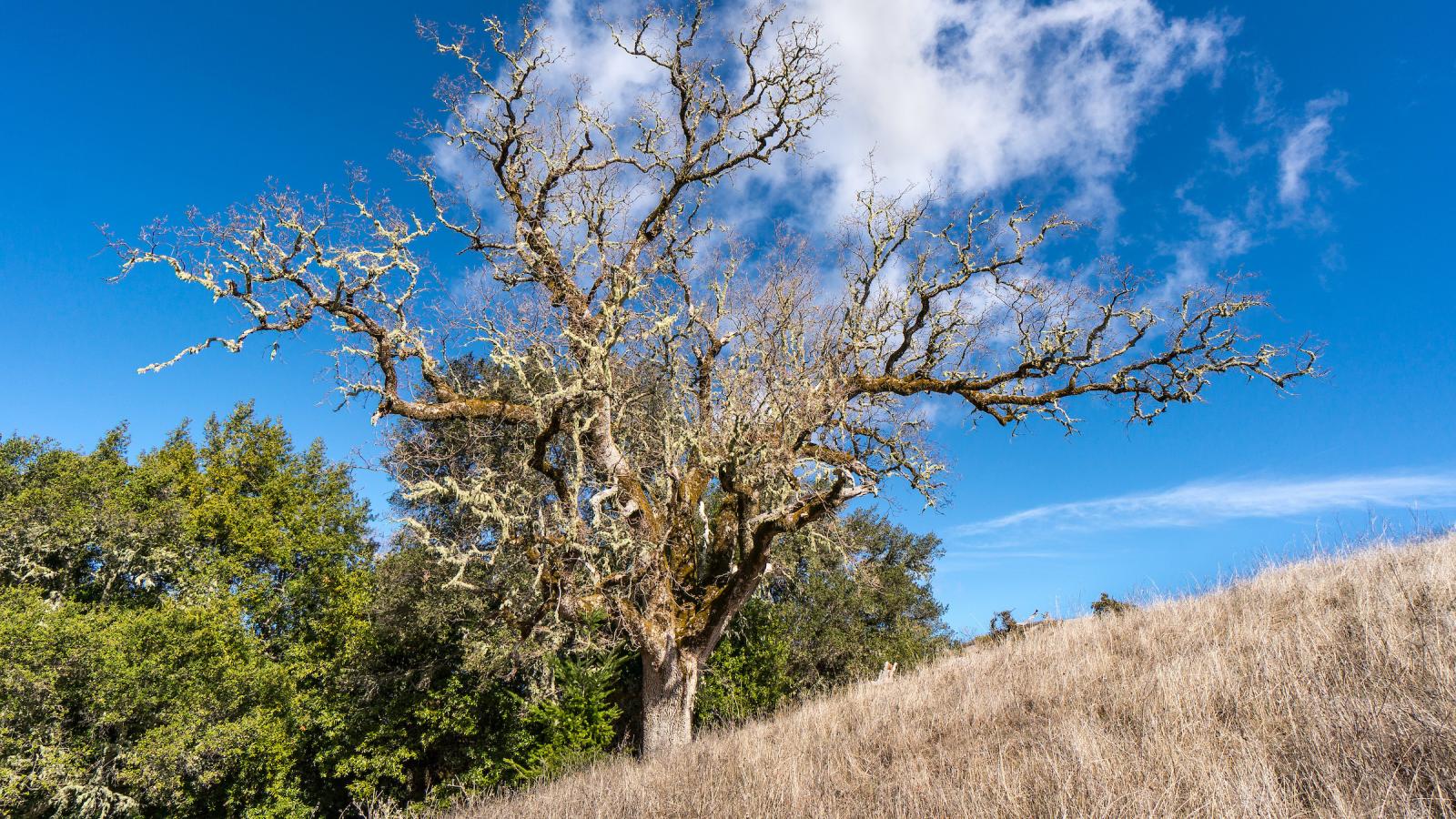Sprawling branches, spiny leaves and plentiful acorns fill the oak woodlands that lay across the Santa Cruz Mountains and support one of the richest and most biologically diverse habitats in the state. However, spread of sudden oak death (SOD) is threatening the health of these ecosystems.
First detected in the Bay Area in the 1980s, SOD has spread dramatically since its discovery. In the past decade, it is estimated that the disease has killed more than one million oak and tanoak trees throughout coastal California and Oregon.
After the recent wet winter, this year’s surveying efforts will be particularly important in tracking the spread of the disease.
Since detecting SOD in Long Ridge Open Space Preserve in 2000, Midpen has committed to finding ways to treat and prevent the disease. Every year, Midpen partners with the University of California at Berkeley’s Forest Pathology and Mycology Lab, and volunteer community scientists, to monitor Midpen preserves for the presence of SOD as part of the larger SOD Blitz Survey Project.
“This community science project is a regional effort that tracks the distribution of the disease. The data generated helps inform researchers, land managers and the public, so we can all collectively manage the spread and impact of this disease to the greatest extent possible,” Midpen Ecologist Arianna Camponuri said.
SOD is caused by phytophthora ramorum, a waterborne pathogen that thrives in the cool, wet climates of coastal evergreen forests and spreads through moist winds, stream water and soil moisture. Though infections are typically only fatal in certain oaks and oak relatives, the pathogen can infect many plant species, including California bay laurels and redwoods, and use them as breeding grounds for the disease.
Since the disease spreads primarily through bay laurel and tanoak trees, Midpen volunteer community scientists spent one recent weekend learning to identify and collect infected leaves from these carriers at various preserves. The leaves are being processed in a diagnostic laboratory at UC Berkeley to confirm which samples are infected with SOD. The results will be used to produce detailed maps of disease distribution within the preserves and surrounding communities and will be released this fall.

